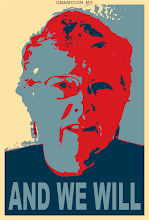Indians Widen Old Outlet in Youth Lacrosse
ONEIDA TERRITORY, N.Y., July 9 — Tim Glass’s mother tells him that he was born with a lacrosse stick in his hand, because his ancestors invented the game. Tim, 14, and his two younger brothers sometimes practice their chosen sport in T-shirts that say, “It’s in our blood.”
Here on Oneida land, roughly 25 miles east of Syracuse, they are part of a new generation of American Indians reasserting their heritage through a game that was invented by their ancestors but in recent decades has been perceived mainly as the province of prep schools and elite colleges.
Over the past four years, the North American Minor Lacrosse Association has grown into a league of six American Indian teams, each with different age divisions, in upstate New York, with 1,000 players ages 3 to 20. Some upstate Indian tribes, newly prosperous from gambling profits and keen to preserve their past, have hired coaches and referees, bought equipment and refurbished playing fields.
Last month, the Seneca tribe spent $97,000 on artificial turf to upgrade a lacrosse stadium on the Allegany Reservation, about 50 miles south of Buffalo. In Lewiston, just northeast of Niagara Falls, the Tuscaroras are building a lacrosse park with six playing areas. The popular contests often draw hundreds of spectators for daylong picnics and festivities, helping unite disparate tribes in a culture often splintered by ancient and modern rivalries.
“It’s not an elite sport to us, it’s a way of life,” said Randi Rourke, editor of Indian Country Today, a leading native newspaper, who pointed to a tradition in which fathers and grandfathers present lacrosse sticks to baby boys. “You play it the moment you can walk. We call it a ‘medicine game’ because it makes people happy to watch, so it’s a kind of medicine.”
Brian Patterson, president of the United South and Eastern Tribes, which represents 24 tribes primarily east of the Mississippi River, said the renewed interest in lacrosse was part of a broader movement to revive Indian languages and traditions in a younger generation. He said he had encouraged young people like his 11-year-old son, Schuyler, who plays for the Oneida Silverhawks, to draw strength and courage from lacrosse, as their ancestors did, to ward off modern-day pressures and problems like drugs and alcohol.
“It’s more than a game; it’s truly an identity for us,” Mr. Patterson said. “With new resources available to the tribal nations, we’re able to provide a future for our people by securing our past.”


Links to this post:
Create a Link
<< Home